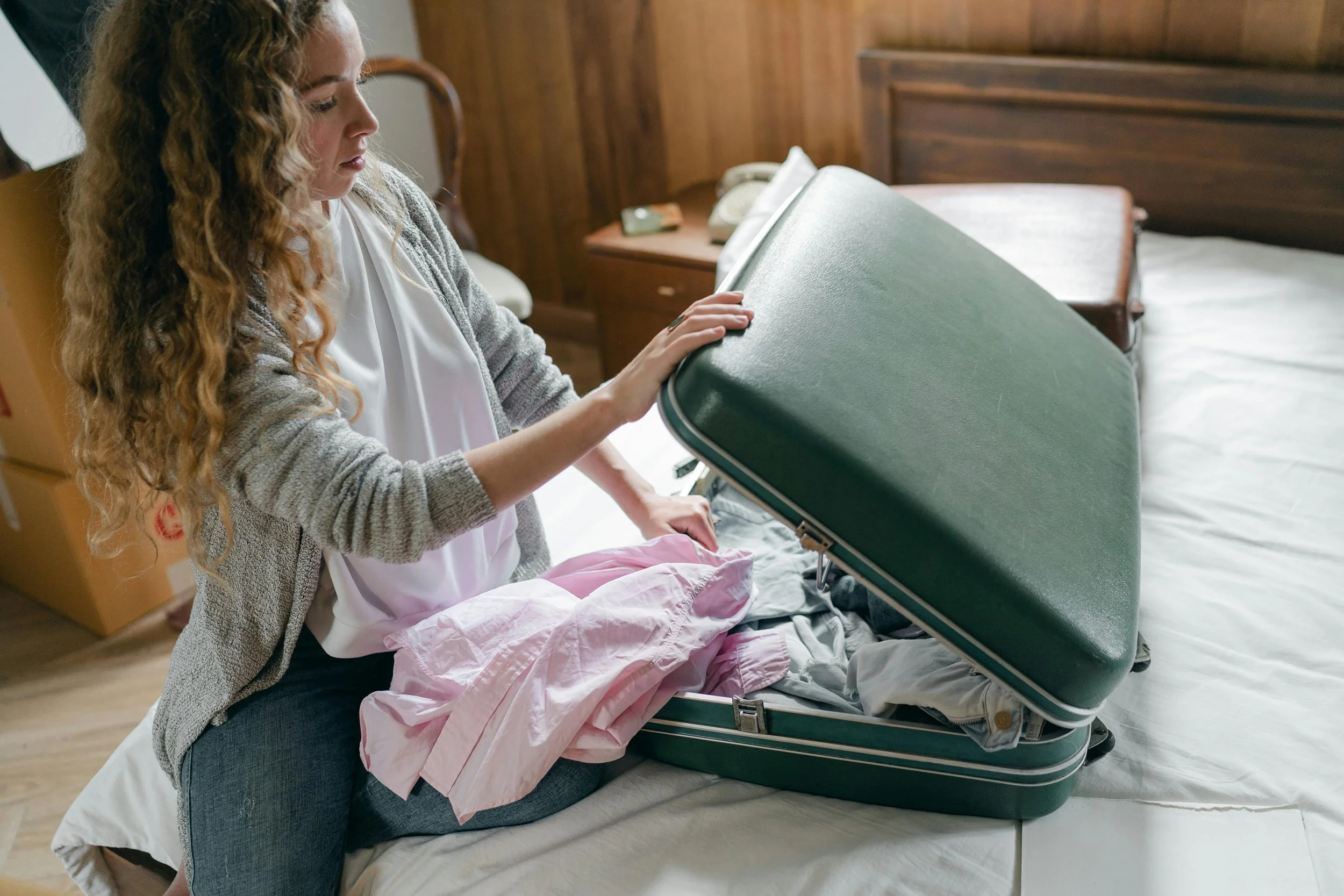What We Packed for Treatment: Love, Trust, and the Need for Others
There was a packing list. Very specific. No strings on shoes. No drawstrings on pants. No hoodie cords, no belts. Everything had to be simple and safe. We followed it. I remember crouching on the floor of his room, sorting socks into pairs and discarding the mismatched ones like it somehow mattered. Every pair of pants he owned had strings. Every hoodie had cords. Everything familiar had to be undone. I made a last-minute run to Kohl's for sweatpants without drawstrings, grabbing sizes and colors without much thought. He was fifteen, exhausted, and willing to let us take over. I don't think I realized until much later how much that willingness meant—how it signaled both surrender and trust. We were flying across the country the next day.
It was chaotic—an emergency wrapped in motion. But in that still moment of packing, something else was happening too. I was laying down my tools. Not the toothpaste or the socks, but the illusion that I could fix it all. I packed what he needed—t-shirts, his favorite sweatshirt (cords carefully removed), essentials. I tucked in a small Lego thing he'd had since childhood and a photo or two. I slipped in a card. I don't remember what I wrote, only that I pressed it flat into the folds of fabric like it might soften the blow. What I packed was love—fierce, trembling, determined. What I left behind was control. Or at least, I tried to.
We planned for it to be a good weekend before admission. A little space between our crisis state and the entrance. He loved cars, and though he couldn't drive yet, we rented a convertible. He wanted to go to a local car meet, so we woke up early and went. It was one of the few places where his confidence could still come out—where the chaos and fear quieted for a while, and he could just be himself. I watched him come alive among strangers who shared his passion, his hands gesturing as he spoke about engines and modifications, his shoulders relaxed for the first time in months.
We drove through the mountains. We hiked in Malibu—one of those moments I know I'll never forget, when the air was soft and the horizon stretched wide and everything felt, just for a second, okay. We even went on a bike ride. There was laughter. Connection. Glimpses of who he had been before all this, and who he might still become.
But the last night unraveled. It turned scary—suddenly and completely. The fear came back with teeth. Whatever calm we'd carved out was gone, and we were thrown right back into the reality of what brought us there. He was not okay. And we could no longer pretend otherwise.
The next morning, we drove to the treatment center. Quiet. Shaken. Resigned. We held each other tightly before saying goodbye and leading him inside. And I stood there—lost and confused—literally having no signal on my phone for directions. There was an irony in leaving him behind in the California mountains, then driving around aimlessly, trying to find my way. Of course, I eventually did.
And as I finally found my way out of those mountains, I realized this wasn’t something I could navigate alone. I wasn’t letting go of him—I was letting others in. I still held on tightly, with all the love I had, but I began to understand that love needed support. That fierce, trembling love had brought us this far, but now it had to make room for help, for hope, for the hands of others. I had packed that love into every fold of his bag.
And now, he was with others, unpacking that same bag I had filled—with the photo, the Lego, and all the love I could fit inside. As he unwrapped each layer, I hoped he would find not just the past, but a way forward.
